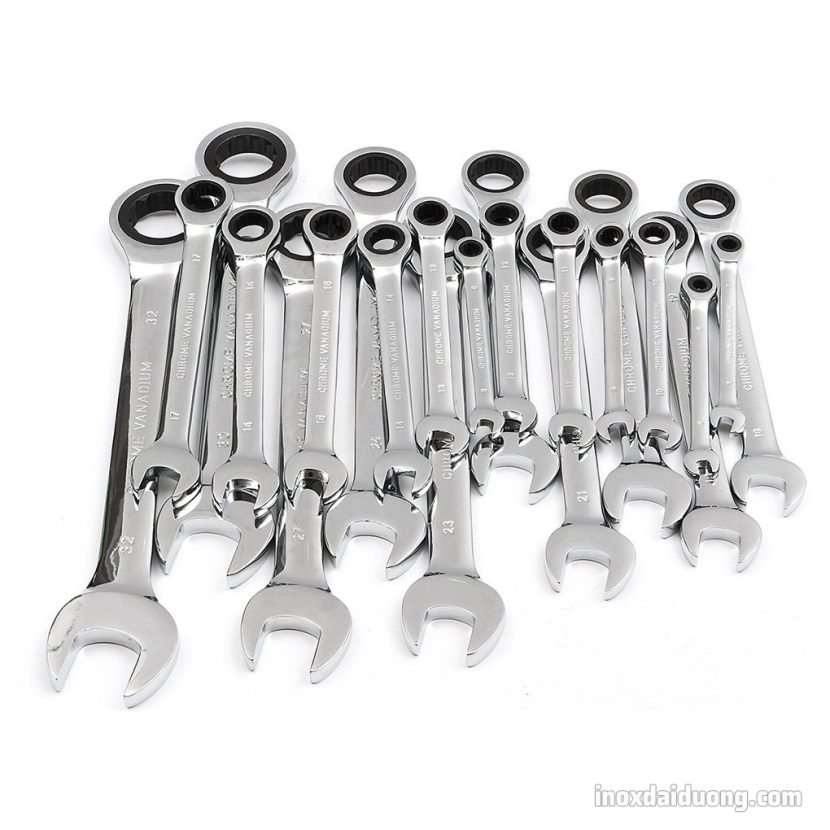Chrome Vanadium Steel, or Cr-V Steel, is a central magnetic alloy in manufacturing and engineering fields. This material combines Steel’s hardness & durability, Chromium’s corrosion resistance and vanadium’s toughness. Chrome vanadium steel has become widely popular in many industries such as automotive, tools and home appliances. This article will explore composition, properties and uses of this Alloy.
Nội dung chính
Composition
Chrome vanadium steel consists of iron, carbon, chromium, and vanadium. The exact composition depends on the manufacturer and intended using purpose. Carbon ratio is 0.4-1.5%, while chromium contents 0.8-1.2%. And Vanadium is usually between 0.15% to 0.25%. These ratios give this alloy unique properties.
Mechanical Properties
Chrome vanadium steel exhibits perfect mechanical properties, making it become popular choice to fabrication work of heavy-duty tools & machine parts. Cr-V Steel offers high tensile strength, measuring how much force this allow can withstand before breaking. It also resists to fatigue at high level, which is particularly useful in applications involving repetitive stress or motion. Cr-V Steel is known for its springiness, making it ideal for certain springs and elastic components.
Physical Properties
Chrome vanadium steel features an excellent blend of hardness, toughness and abrasion resistance; rendering it suitable for cutting tools and metalworking machinery. Additionally, it is magnetic and melted at around 2,830°F (1,556°C), which is higher than almost other alloys.
See more:
Application
Chrome vanadium steel is found in various applications, requiring strength, durability, and corrosion resistance. Its common uses include hand tools such as: wrenches, pliers, and screwdrivers, as well as automotive parts: gears, shafts, and suspension springs. And also in household appliances like kitchen knives, scissors, construction & agriculture machinery.
Corrosion Resistance
Due to the presence of Chromium, this steel is highly corrosion resistant, Chromium interacts with oxygen to make a protective layer of oxides on metal’s surface, preventing further oxidation and rust. Nevertheless, Cr-v Steel is not entirely impervious to rust and might corrode in specific chemical or environments.
Heat treatment
Heat treatment subjects the material to specific temperatures and cooling conditions to modify its properties. Chrome vanadium steel can be heat-treated to enhance its hardness, toughness and abrasion resistance. The common heat-treatment methods for Cr-V Steel include annealing, quenching, tempering, and hardening.
Processing
Chrome vanadium steel is relatively easy to process but requires high-speed tools and suitable cooling to avoid overheating & damage to both workpiece and equipment. Processing high-quality Cr-V Steel parts necessitates advanced equipment and expertise to ensure accuracy and precision.
Welding
Chrome Vanadium steel is weldable in the purpose of cracking and distortion prevention but it requires preheating and post-weld heat treatment. Proper equipment, procedures, and expertise are crucial to maintaining the integrity and durability of the weld.
Chrome vanadium steel is a versatile and reliable alloy, become vital across multiple industries. Its distinctive properties make it suitable for various applications that demand strength, toughness, durability, and corrosion resistance. This steel has significantly impacted the manufacturing and engineering sectors by offering an excellent balance between performance and affordability. With advancing technology, we can anticipate more specialized applications and innovations facilitated by this remarkable alloy.
OSS Dai Duong contact details:
- Hotline: 1800 6968
- Fanpage: Dai Duong Stainless Steel
Editorial board: O S S Dai Duong




CÔNG TY CỔ PHẦN QUỐC TẾ ĐẠI DƯƠNG O S S
Inox Đại Dương cam kết cung cấp vật tư inox đạt chuẩn – đúng nguồn gốc – đúng chất lượng, giúp doanh nghiệp yên tâm sản xuất và nâng cao uy tín thương hiệu.
Nếu bạn cần hỗ trợ về sản phẩm hoặc báo giá nhanh, vui lòng liên hệ với chúng tôi qua thông tin dưới đây:
Xem chính sách nội dung